There is literature dating far back into humanity’s past referencing the incredible powers of crystals. But how do crystals actually work?
Table of contents
1. INTRODUCTION
In this lesson, we are going to learn about the crystal lattice. This will help us answer the question “How do crystals work?”.
There is literature dating far back into humanity’s past referencing the incredible powers of crystals. To this day you can find an ever expanding mountain of books and websites (like us) discussing the amazing things crystals can do, like clear electromagnetic smog, remove negative energy, ground and protect us, uplift and heal. Is there any basis for these claims?
2. BASIC BUILDING BLOCKS
In LESSON ONE, we discussed the geological terms for crystals, rocks and minerals. Additionally, we learned that atoms arrange themselves in a very precise, orderly fashion to make the elements we find on earth. And elements, in turn, make up minerals.
As they grow, they have a set, distinctive way of locking new atoms into that precise, orderly pattern to repeat it again and again. And in perfect conditions, they are able to repeat that pattern long enough to form beautiful crystals that we can see.
These perfectly ordered building block patterns are the key to how crystals work.
3. THE CRYSTAL LATTICE
The crystal lattice, very simply, is what we call the pattern that the atoms arrange themselves in to make crystals. Outwardly crystals come in a huge array of different shapes, colours and sizes. But inwardly, there are only SIX lattice structures (also called systems) found on all of earth!! So in all the ways atoms could join together to form elements, in all the thousands of minerals, the atoms only arrange in one of six different patterns. Isn’t that incredible?
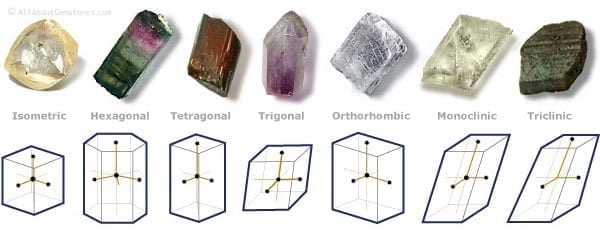
This is what makes crystals so special and powerful; their internal structure is perfect – it is absolutely mathematically precise. And as you know from lesson one, it takes a perfect set of conditions to form a crystal.
Three factors define each crystal lattice system. The factors all relate to their axes.
An AXIS is a real or imaginary line on which something rotates, or a straight line around which things are evenly arranged. An example of an axis is an imaginary line running through the earth on which the earth rotates.
THE 3 FACTORS DEFINING A CRYSTAL LATTICE SYSTEM:
- How many axes it has,
- The lengths of the axes, and
- The angles at which the axes meet.
When it comes to the crystal lattice systems, there is a set way the axes are defined. The shortest axis is always labelled A, while the longest axis is always C. In between those lengths is the B axis. Furthermore, sometimes there is a fourth axis, labelled D.
4. THE 6 CRYSTAL LATTICE SYSTEMS
Let’s have a look at the 6 patterns that crystals can form in. Each pattern (lattice system) has geological properties. This means specific points that define it. In addition, they have metaphysical properties, which means energetic properties (how they work with energy). In the next lesson, we will go deeper into understanding energy and how crystals work with energy to help us. For now, let’s get a basic idea of the “mechanics” behind it.
1. ISOMETRIC OR CUBIC CRYSTAL SYSTEM
GEOLOGICAL PROPERTIES
- Has 3 axes
- All axes are the same equal length
- They intersect each other at 90º angles
METAPHYSICAL PROPERTIES
- Extremely stabilizing and grounding
- Give structure
- Help with reorganization

The Isometric Crystal System (also sometimes called the Cubic System) is a crystal system that has 3 axes. They are all the same length, and they intersect each other at perfect 90º angles. This equality in all directions is called “isotropic”.
These crystals are said to be extremely stabilizing and grounding. In addition, they are excellent for structure and reorganization.
Examples of minerals that form in this isometric system include: all garnets, diamond, fluorite, gold, lapis lazuli, pyrite, silver, sodalite, sphalerite, and spinel.
-
 Fluorite Natural OctahedronR95.00
Fluorite Natural OctahedronR95.00 -
 Fluorite, Multicolour Polished Gallet SMLR120.00 – R140.00
Fluorite, Multicolour Polished Gallet SMLR120.00 – R140.00 -
 Fluorite, Green Frosted Cluster 4.5cmR120.00
Fluorite, Green Frosted Cluster 4.5cmR120.00 -
 Fluorite, Purple Crystal Specimen 3.5cmR165.00
Fluorite, Purple Crystal Specimen 3.5cmR165.00
2. TETRAGONAL CRYSTAL SYSTEM
GEOLOGICAL PROPERTIES
- Has 3 axes
- Axis A & B are the same length, axis C is longer than them
- They intersect each other at 90º angles.
METAPHYSICAL PROPERTIES
- Absorb energy
- Transform energy
- Balancing
- Assist with resolving issues

The tetragonal system also has three axes that all meet at 90º. It differs from the isometric system in that the C axis is longer than the A and B axes, which are the same length.
These crystals are said to absorb and transform energy and are excellent balancers and resolvers.
Minerals that form in the tetragonal system include apophyllite, idocrase, rutile, scapolite, wulfenite, and zircon.
-
 Hausmannite Specimen RARE 2cmR120.00
Hausmannite Specimen RARE 2cmR120.00 -
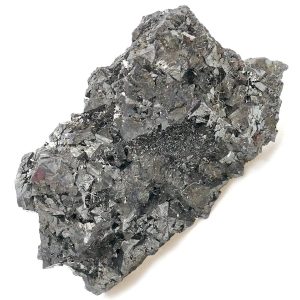 Hausmannite Crystal Specimen 3cm RARER160.00
Hausmannite Crystal Specimen 3cm RARER160.00 -
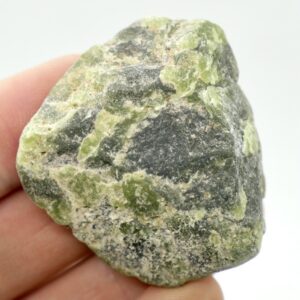 Idocrase Vesuvianite Rough PieceR25.00 – R45.00
Idocrase Vesuvianite Rough PieceR25.00 – R45.00 -
Product on sale
 Zircon, Hyacinth Rough Crystal (RARE)R3.00 – R25.00
Zircon, Hyacinth Rough Crystal (RARE)R3.00 – R25.00
3. ORTHORHOMBIC CRYSTAL SYSTEM
GEOLOGICAL PROPERTIES
- Has 3 axes
- They are all different lengths
- They intersect each other at 90º angles.
METAPHYSICAL PROPERTIES
- Encompass energy
- Cleansing & clearing energy
- Protective

This crystal system also has 3 axes, but they are all of unequal length. Like the above systems, they intersect each other at 90 degree angles.
These crystals are said to encompass energy, and are useful cleansers and clearers. Furthermore, they can offer protective energy.
Minerals that form in the orthorhombic system include andalusite, celestite, chrysoberyl (including alexandrite), cordierite, iolite, danburite, zoisite, tanzanite, thulite, enstatite, hemimorphite, fibrolite/sillimanite, hypersthene, olivine, peridot, and topaz.
-
 Moonstone, Garnierite Rough PieceR15.00 – R20.00
Moonstone, Garnierite Rough PieceR15.00 – R20.00 -
 Prehnite Crystal Specimen 8.5cmR130.00
Prehnite Crystal Specimen 8.5cmR130.00 -
 Libethenite Crystal Cluster 4.5cm RARER220.00
Libethenite Crystal Cluster 4.5cm RARER220.00 -
 Aragonite, White Crystal Cluster 8.5cmR210.00
Aragonite, White Crystal Cluster 8.5cmR210.00
4. MONOCLINIC CRYSTAL SYSTEM
GEOLOGICAL PROPERTIES
- Has 3 axes
- They are all different lengths
- Two axes (A&C) meet at 90º angles
METAPHYSICAL PROPERTIES
- Purifying & refining energy
- Perception
- Decision making

The previously discussed crystal systems all have axes/sides that meet at 90º. In the monoclinic system, two of the axes, A and C, meet at 90º, but axis B does not. All axes in the monoclinic system are different lengths.
These crystals are said to be useful for purification, refining energy, and decision making. Furthermore, they can aid perception and insight.
Minerals that form in the monoclinic system include azurite, brazilianite, crocoite, datolite, diopside, jadeite, lazulite, malachite, orthoclase feldspars (including albite moonstone), staurolite, sphene, and spodumene (including hiddenite and kunzite).
5. TRICLINIC CRYSTAL SYSTEM
GEOLOGICAL PROPERTIES
- Has 3 axes
- They are all different lengths
- None of them meet at 90º angles
METAPHYSICAL PROPERTIES
- Integrate energy & opposites
- Multi-dimensional
- Astral work

This basic Crystal System has 3 axes of unequal length which are oblique to one another (none of them meet at 90 degree angles).
These crystals are said to integrate energy and opposites, and assist in exploring other dimensions. In addition to that, they are also excellent for astral work.
Examples of minerals that form in the triclinic system include: amblygonite, axinite, kyanite, microcline feldspar (including amazonite and aventurine), plagioclase feldspars (including labradorite), rhodonite, and turquoise.
6. HEXAGONAL OR TRIGONAL CRYSTAL SYSTEM
GEOLOGICAL PROPERTIES
- Has 4 axes (6-sided crystals)
- Three are equal in length and meet at 60º angles
- The fourth axis is vertical, and is at 90º to the 3 horizontal axes. It’s usually longer than them (labelled “C”).
METAPHYSICAL PROPERTIES
- Highly energetic
- Balancing
- Laser focus
- Exploring specific issues
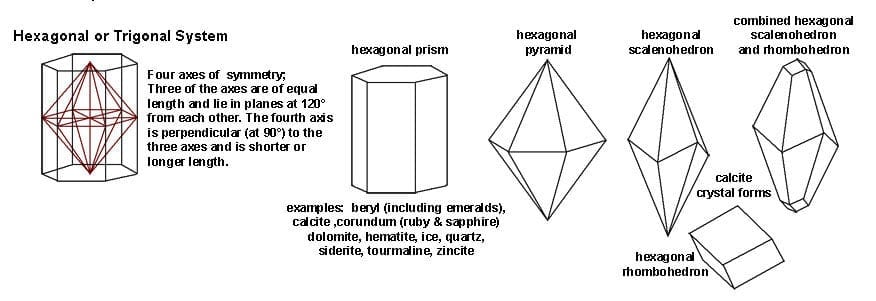
All the crystal systems discussed so far show every variation of four-sided figures with three axes. But this next system has an additional axis. This gives the crystals six sides.
Of these four axes, three are of equal length and meet at 60º to each other. The final axis, the “C” or vertical axis, is at 90º to the horizontal axis. In addition, it is usually longer than them.
Crystals in this system are said to be highly energetic. Furthermore, they are especially useful for energy balancing, laser focus, and exploring specific issues.
Examples of minerals that form in this hexagonal system include apatite, beryl (including aquamarine, emerald, heliodor, and morganite), taaffeite, and zincite.
-
 Tourmaline with Aquamarine & Goshenite 8cmR1,430.00
Tourmaline with Aquamarine & Goshenite 8cmR1,430.00 -
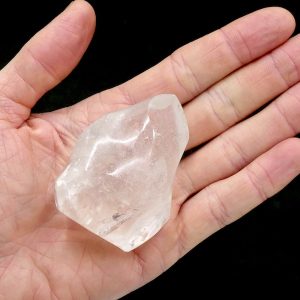 Quartz, Clear Crystal Flame 6cmR240.00
Quartz, Clear Crystal Flame 6cmR240.00 -
 Blue Lace Agate with Calcite Cluster 10.5cmR385.00
Blue Lace Agate with Calcite Cluster 10.5cmR385.00 -
 Vanadinite Crystal Specimen 3cmR230.00
Vanadinite Crystal Specimen 3cmR230.00
5. MINERALOIDS (AMORPHOUS)
GEOLOGICAL PROPERTIES
- Has no internal lattice structure
METAPHYSICAL PROPERTIES
- Extremely fast working
To recap from lesson one: Depending on how they formed, minerals can either be classified as “crystalline” or “amorphous“. It’s just a fancy way of saying the element/s formed into a crystal (i.e. the atoms repeated their pattern over and over in perfect conditions to make a visible crystal), or didn’t (conditions changed and they got squished together, making what’s called a “conglomerated mass” or “conglomerate” for short).
But some minerals never crystallize, they are always amorphous no matter the conditions. These minerals are called ‘mineraloids‘.
It is said that energy is able to pass through mineraloids very rapidly – making them extremely fast-working.
Examples are amber, pearl and obsidian.
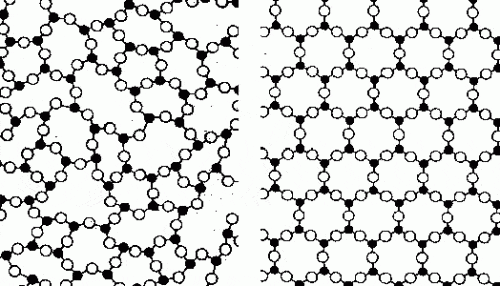
-
 Opal, Green Standing Freeform 9cmR570.00
Opal, Green Standing Freeform 9cmR570.00 -
 Opal, Yellow Rough Piece 9cmR270.00
Opal, Yellow Rough Piece 9cmR270.00 -
 Opal, Dendritic Heart 3.5cmR95.00
Opal, Dendritic Heart 3.5cmR95.00 -
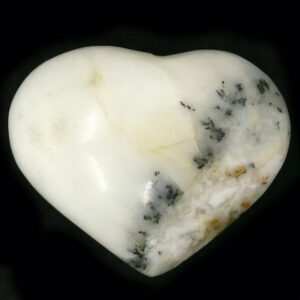 Opal, Dendritic Heart 4cmR130.00
Opal, Dendritic Heart 4cmR130.00
6. IN SUMMARY: How DO Crystals Work?
Well done! You’ve made it to the end of lesson two in our beginners crystals course.
In summary, you now know that a crystal lattice system refers to the mathematically precise arrangement of atoms, and that there are only 6 different patterns the atoms ever form, to make all the different crystals in the world. These six systems are defined by their axes, and have specific metaphysical properties ascribed to them.
Finally, there is a group of minerals that have no crystal lattice system, which is called an “amorphous” formation.
So, HOW DO CRYSTALS WORK? It’s all down to this: their incredible crystal lattice system. Find out more in the next lesson!
…UP NEXT
In the LESSON 3, we’re going to learn about ENERGY. You will learn how the basic building blocks of crystals (their atomic structure) affect energy, store it, change it, and more!
CRYSTALS COURSE FOR BEGINNERS: LESSON 3









